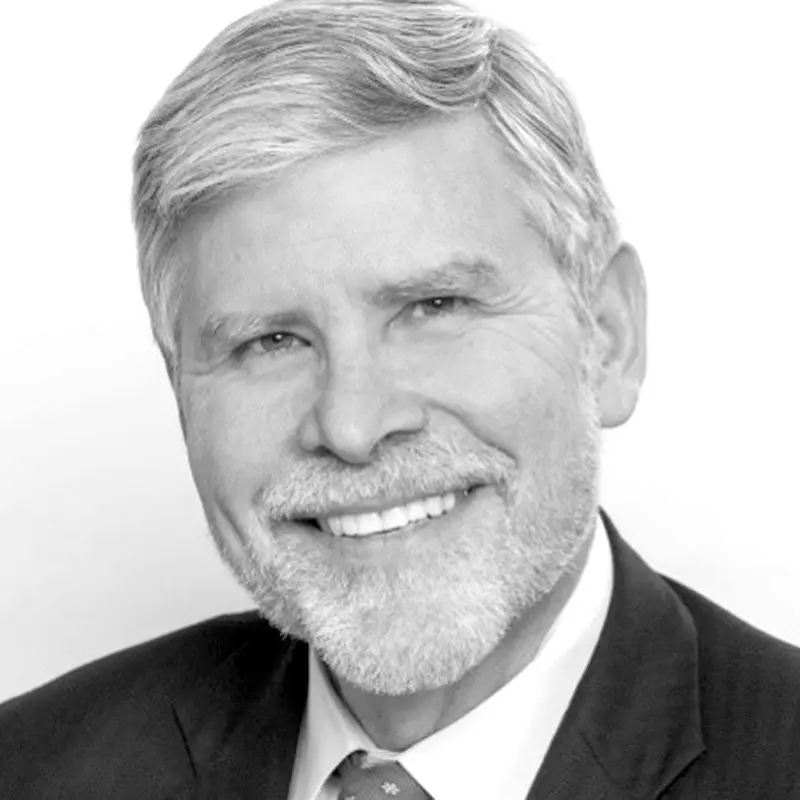Learning to Let Go: Leadership Lessons for a Sustainable Future
by Scott Simpson
Senior Fellow, Design Futures Council
March 2, 2022
Originally posted on March 1, 2016
Sustainability is a hot topic in the A/E/C industry these days, and for good reason. In a remarkably short time, we seem to have reached cultural consensus that the long-term success of homo sapiens requires wise stewardship of the resources at our disposal, and that it’s not smart to make a mess that someone else (our grandchildren) will have to clean up.
There’s also an increasing awareness that we are all in this together, and that issues of sustainability transcend borders, ideologies, and politics; it’s something that affects all of us equally. It follows that if we expect to be successful in the long run, we will have to discard some of our old habits and adopt new ones.
These same basic principles apply not only our work as design professionals, but also to how we manage our own firms. Much has been written about the concept of going from “good to great.” The key words are “from” and “to.” Together, they imply a departure from things we’ve done in the past in order to take a different approach. The problem, of course, is that while human beings are problem-solvers by nature, meaningful change is devilishly difficult to achieve. There is comfort in familiarity; old habits die hard.

There is a good reason for this: it is the old habits that made us successful in the first place. That is why we cherish them. The more we do things a certain way, the better we become, so success is a self-reinforcing loop. Why risk change? Because achieving success is very different from maintaining success. Just ask any Super Bowl winner or World Series champion how hard it is to repeat last season’s victories; very few indeed are able to pull this off, regardless of how talented or disciplined they may be. The reason is pretty simple: change happens all around us, all the time, whether we like it or not. Next season will never be the same as last season. So if we expect to win another trophy, we’d better be prepared to adjust the game plan.
It’s ironic that design professionals, who are in the business of making changes in the lives of their clients (and society at large), are so reluctant to embrace change in their own professional practices. Indeed, the A/E/C industry was the last major segment of the economy to embrace technology, decades after more conservative industries like banking, law, or medicine figured out how important it was. It took a full decade for CAD to gain traction, and another for BIM to achieve widespread adoption. We’re just on the threshold of even more dramatic technological innovations, such as 3-D printing, drones, robotics, and algorithmic design, which hold the promise to entirely transform how buildings are designed, documented, and delivered. Very few design firms are on the forefront of taking full advantage of these opportunities. How come?
The implications are obvious: tomorrow’s successful design firms will operate very differently than in the past. Some will evolve and adapt, and others will disappear. The challenge for leaders is to navigate the changing currents even if it’s not entirely clear what to do. Effective leaders do not fear the future; they embrace it. When Columbus set sail, he knew enough to head west, but not much more than that. There were no charts to guide his way, and what he encountered was far different from what he expected. He failed miserably to deliver on his promise to bring back boatloads of spices from India, but he succeeded beyond his wildest dreams in other, more important ways. It’s also worth noting that not everyone on board was fully committed to the mission. Still, he had a clear vision of what he wanted to achieve and sufficient leadership skill to inspire his crew.
Good leaders need to know what they are trying to achieve and why, but that is only the first step. They must also communicate the vision, mission, strategy, and tactics to their followers in ways that are sufficiently compelling to inspire action. This requires everyone in the firm to step out of their respective comfort zones into the unknown. People at all levels of the organization will see the problem (or opportunity) differently, and they will respond to different pressures and incentives. The leader’s message must resonate across all frequencies if it is to be heard, understood, and adopted.
Cortez had a particularly effective method for getting his point across. When he landed in Mexico, he gathered his troops on shore and burned the boats in full view of everyone, making it abundantly clear that no one was headed back to Spain any time soon. Dramatic? Yes, but also extremely effective.
This is not to suggest that it’s necessary to burn down the house in order to get from good to great. However, it is necessary to change key aspects of the organization (even those that may be working quite well) and replace them with different policies, protocols, and procedures that will deliver better results. Meaningful change is not achieved by wishful thinking, and hope is not a strategy. Meaningful change requires both action and continual adjustment.
The hard part is knowing what to discard and what to keep. Every firm does certain things well and has enjoyed some measure of success (or it would not be in business). Sometimes failure can be a friend, because it forces a firm to change or die sooner rather than later. (In Silicon Valley, where “failing early and often” actually carries positive connotations, this is known euphemistically as “pivoting.”) Many firms went through this process as a result of the recession. To survive, they had to focus on the essentials. Staff was cut and expenses pared, and the result was leaner, more nimble firms with a clearer sense of mission. Lesson learned? It should not take another recession to keep making the continual adjustments that are required for long-term success.

When communicating change to staff, expect resistance. (If you don’t get resistance, it’s likely that you are not being taken seriously enough!) Be prepared to explain exactly what needs to be different and why. It’s important to be specific why the status quo is no longer acceptable, what will replace it, who will do it, and how it will happen. Make sure that metrics are in place so that progress can be measured. Equally importantly, explain the benefits that will accrue as a result of the changes and how this will affect staff at all levels of the organization. Change is a very personal thing, and everybody will react slightly differently. Publicize your progress, talking openly about how things are going. Celebrate successes as they occur, making sure that when things go right, everyone knows the story. (And in the same vein, make sure that any backsliding is dealt with quickly and effectively, but without personal criticism; as with sustainability, you’re all in this together.)
Making continual adjustments to keep the firm moving in the right direction is one of the hardest jobs for any leader, but also one of the most important. An organization that does not continually grow and change will quickly go stale. The job of leadership is to keep driving the firm toward a more successful, and sustainable, future, and this requires being constantly on the lookout for new management ideas, new approaches to design, and new technologies. This is the best — and only — way to make sure that the firm stays relevant. Sometimes leading means letting go.
Scott Simpson, FAIA, is a senior fellow of the Design Futures Council and a regular contributor to DesignIntelligence.


